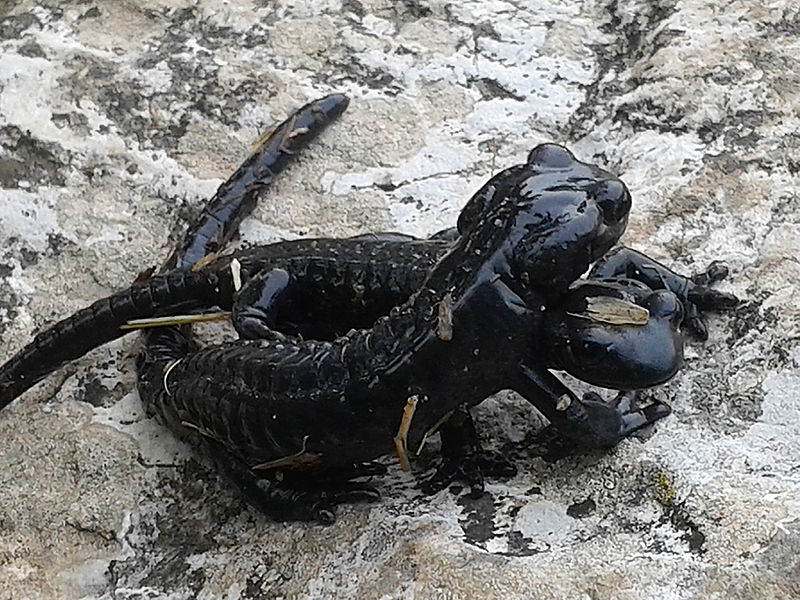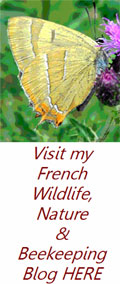Alpine Salamander
Salamandra atra
Salamandre noire
The Alpine salamander is an endemic of the alpine arc with some isolated areas in the Dinaric Alps. In earlier times, the whole Alps were considered to be inhabited by a single species but with the declaration of the new species Salamandra lanzai, the situation in the Western Alps is no longer clear. The range of Salamandra atra probably does not exceed the Rhône valley in the region of Lake Geneva (West Switzerland). The map below shows the general range in France.
The habitat consists of mixed deciduous and coniferous forests on cretaceous limestone at altitudes between 1300 and 1800 metres Typical habitats of the Alpine salamander are alpine humid meadows and woodlands where it lives in cracks crevices or burrows only to emerge at night or after rainfall. They hibernate, depending on the altitude, for a period of 6-8 months
Diet consists of a wide range of terrestrial invertebrates, varying upon the period of the season.
Salamandra atra is a fully terrestrial species. Mating involves a ventral amplexus by the male, followed by the deposition of the spermatophore. One embryo develops in each of the two uteri where the developing young first feed on fertilised and later on unfertilised ova in the uteri. Later in development, a zona trophica develops on the border between oviduct and uterus, which continuously provides the young with a cellular material that serves as food. The young develop extremely large external gills which serve as an exchange of nutritive fluid through the maternal uterus. Gestation in total takes 2 years between 650 and 1000 m, and 3 years between 1400 and 1700 m elevation. The two terrestrial, fully metamorphosed young are 40-50 mm total length upon birth when they are fully self supporting.
Longevity is at least 10 years. Length up to 15cm



